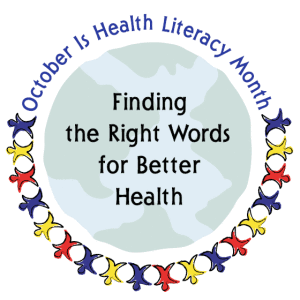
Personal health literacy is when individuals have the ability to find, understand, and use information and services for health-related decisions for themselves and others. Complicated and unfamiliar words leave nearly nine out of ten American adults struggling to understand health information. This limited health literacy is associated with medication errors, the inability to manage chronic health conditions, as well as increased morbidity and mortality rates.
 “Health literacy is important because patients are managing their health at home or in the community most of the time,” shared Rich Preussler, MA, director of learning and development at Sanford Health. “Poor patient understanding can result in a number of negative health outcomes and increased cost.”
“Health literacy is important because patients are managing their health at home or in the community most of the time,” shared Rich Preussler, MA, director of learning and development at Sanford Health. “Poor patient understanding can result in a number of negative health outcomes and increased cost.”
Improving health literacy could prevent nearly one million hospital visits and save over $25 billion a year, according to the Centers for Disease Control and Prevention. Health Literacy Month in October is an opportunity for individuals and organizations providing health care services to consider their patient education and communication strategies.
 Patient education is considered a ‘Sanford Standard’, which signifies an elevated level of importance in the organization,” added Preussler. “Sanford has a process in place when written materials are developed to connect care team members with staff who have expertise in health literacy as well as other patient teaching best practices.”
Patient education is considered a ‘Sanford Standard’, which signifies an elevated level of importance in the organization,” added Preussler. “Sanford has a process in place when written materials are developed to connect care team members with staff who have expertise in health literacy as well as other patient teaching best practices.”
Using plain language and clear examples when providing health educations allows individuals to engage in shared decision making. There are many facets to consider when addressing health literacy, including culture, language, personal beliefs, and health equity.
“Sanford is working towards flipping the paradigm,” explained Preussler. “Instead of the perspective that health literacy is a patient deficit, Sanford is working toward becoming a ‘health literacy promoting organization’ by infusing those standards in the education and information provided.”
Assessing the effectiveness of the teaching rather than quizzing the patient is the goal. Essential patient-teaching best practices include the use of plain language, written materials that meet health literacy standards, and the teach-back method, which involves asking the patient to share the essential information in their own words.
Preussler concluded, “Patients become more confident and engaged in their own care when the patient-teaching is individualized and involves them.”
